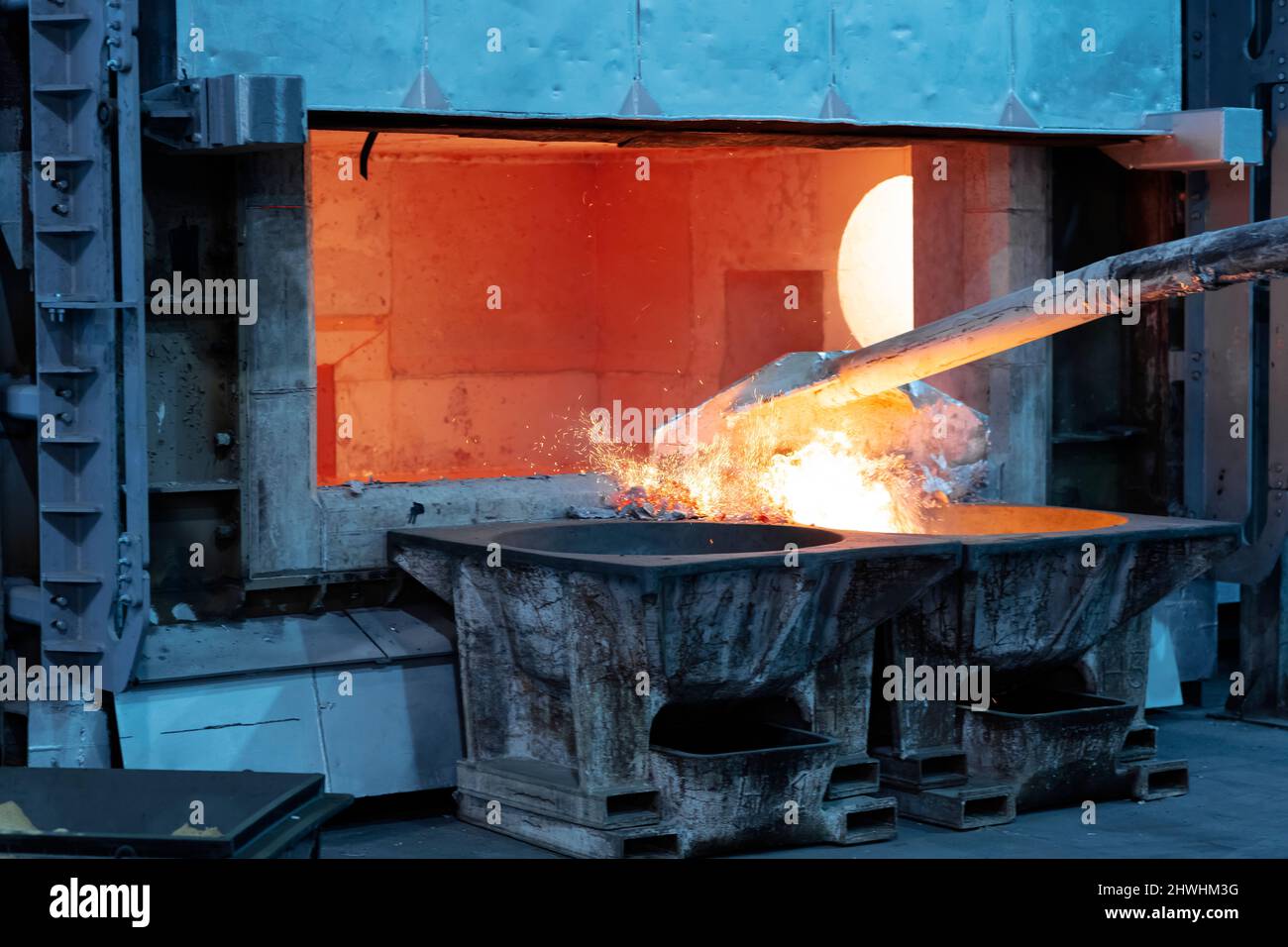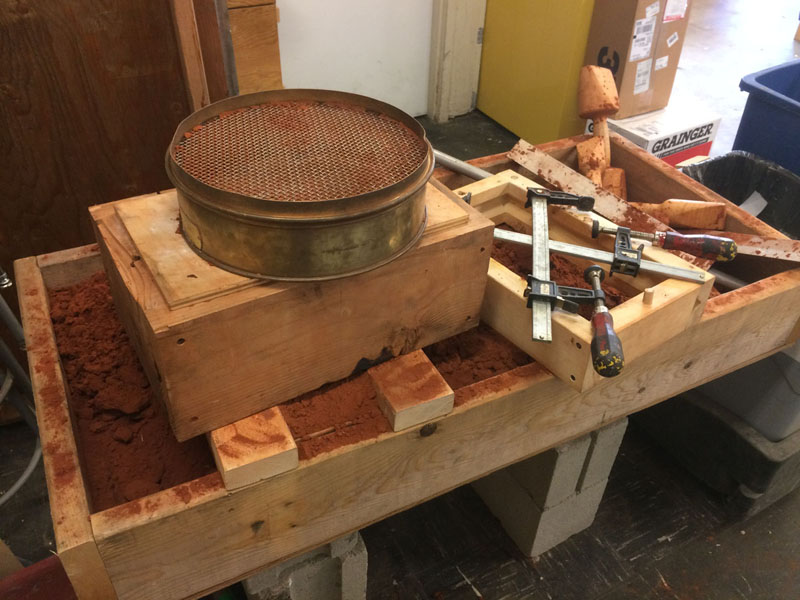Aluminum Foundry Wisconsin supports businesses with casting solutions
Wiki Article
Just How Aluminum Foundry Adds To Improvements in Aerospace Design
Aluminum shops are essential to developments in aerospace engineering. They generate lightweight, high-strength elements that are vital for contemporary aircraft. Via advanced casting methods, these foundries create complicated geometries that improve structural honesty. Furthermore, the advancement of premium Aluminum alloys sustains the industry's focus on fuel efficiency and sustainability. However, obstacles stay in the manufacturing process. Recognizing these variables discloses the extensive influence of Aluminum on aviation's future.The Value of Lightweight Materials in Aerospace Design
As the aerospace sector remains to progress, the value of light-weight products ends up being significantly obvious. The need for performance and sustainability drives engineers to prioritize making use of materials that minimize overall weight without jeopardizing structural integrity. Light-weight materials, specifically Aluminum, play an important duty in boosting gas effectiveness, enhancing haul ability, and enhancing the total efficiency of airplane.Additionally, the integration of these materials enables innovative designs, enabling producers to produce more wind resistant forms that can endure extreme problems. The reduction in weight not only reduces functional prices but likewise adds to a decreased environmental impact, straightening with worldwide efforts towards sustainability in aeronautics.
Advanced Casting Techniques in Aluminum Foundries
Advanced spreading methods in Aluminum foundries play a vital duty in aerospace engineering by allowing the manufacturing of accurate and light-weight parts. Developments in mold and mildew design and accuracy casting processes are essential in accomplishing optimal performance and architectural integrity. Furthermore, the growth of light-weight alloys enhances the general performance and effectiveness of aerospace applications.Cutting-edge Mold Design
Ingenious mold and mildew design plays a necessary function in the effectiveness and efficiency of Aluminum foundries, especially within the aerospace industry. By leveraging innovative products and techniques, modern-day mold and mildews can be crafted to stand up to high temperatures and pressures, making certain peak efficiency throughout the casting process. These designs often integrate intricate geometries that permit for the production of lightweight yet structurally audio elements, necessary for aerospace applications. Additionally, the use of computer-aided design (CAD) software program facilitates precise modeling, enabling factories to imitate and fine-tune mold and mildew layouts before physical manufacturing begins. This not only improves the top quality of cast components but additionally decreases waste and preparation, bring about significant price financial savings. In general, innovative mold design is a foundation of progression in Aluminum Foundry technology for aerospace design.Accuracy Casting Procedures
The performance of cutting-edge mold and mildew layouts effortlessly integrates with precision spreading processes, which are crucial for producing top notch Aluminum components in aerospace design. These processes, consisting of sand casting, pass away casting, and financial investment casting, guarantee the creation of complicated geometries with tight resistances. Advanced strategies like vacuum casting and stress die casting improve the stability and surface coating of the last products. Precision casting reduces material waste while making the most of the mechanical residential or commercial properties of Aluminum, critical for aerospace applications. Additionally, utilizing real-time tracking and progressed simulation tools throughout the spreading procedure permits prompt changes, causing enhanced top quality control. Jointly, these precision spreading processes setting Aluminum factories at the forefront of aerospace advancement, sustaining the sector's demand for integrity and efficiency.Light-weight Alloy Advancement
As aerospace designers seek to boost gas effectiveness and performance, light-weight alloy growth becomes an important emphasis in Aluminum factories. These factories use innovative casting techniques to develop alloys that offer exceptional strength-to-weight proportions. Developments in alloy structure, including the incorporation of components like lithium and magnesium, allow the manufacturing of products that hold up against severe conditions while reducing total airplane weight. Techniques such as die casting and financial investment spreading promote the precision manufacturing of complex shapes, which are critical for aerospace applications. Additionally, ongoing study aims to enhance these alloys for boosted mechanical residential properties and raised resilience. By focusing on light-weight alloy growth, Aluminum foundries greatly contribute to the evolution of aerospace engineering, leading the way for a lot more reliable and sustainable aircraft designs.
Enhancing Architectural Honesty Via Aluminum Elements
Aluminum elements supply significant advantages in improving architectural integrity within aerospace engineering. Their light-weight nature adds to general performance while preserving strength, which is necessary for aircraft efficiency. Furthermore, the stress resistance residential properties of Aluminum assistance guarantee the resilience and integrity of aerospace structures under various operational problems.
Lightweight Product Advantages
While typical materials typically endanger weight for stamina, utilizing Aluminum parts in aerospace design uses substantial advantages in architectural integrity. Aluminum's light-weight nature adds to general layout effectiveness, permitting more streamlined aircraft that eat less gas, therefore boosting sustainability. The product's exceptional strength-to-weight ratio warranties that elements keep resilience without including unnecessary mass. This top quality fosters improved performance and agility in flight, as well as enhanced payload abilities. Furthermore, Aluminum's resistance to deterioration extends the life expectancy of aerospace structures, decreasing upkeep costs and boosting security. As makers significantly take on Aluminum alloys, the aerospace market experiences a transformative shift towards more efficient and reliable engineering remedies that prioritize both performance and ecological duty.Stress Resistance Characteristics
Although various materials have special buildings, Aluminum's remarkable stress and anxiety resistance stands apart as an important aspect in boosting the structural integrity of aerospace parts. This resistance plays a crucial function in guaranteeing that aircraft can hold up against different operational tensions, consisting of exhaustion, effect, and ecological problems. Aluminum alloys, specifically crafted for aerospace applications, display high tensile toughness while preserving lightweight features, making it possible for engineers to create more effective structures - Aluminum Foundry. Furthermore, the capacity of Aluminum to endure cyclic loading without substantial deformation adds to the longevity and reliability of aerospace elements. As developments proceed in Aluminum Foundry methods, the growth of stress-resistant Aluminum elements assures further improvements in performance, security, and efficiency throughout the aerospace sector, solidifying Aluminum's duty as a preferred product in contemporary engineeringFuel Performance Improvements Driven by Aluminum Innovations
As the aerospace sector seeks to improve fuel performance, ingenious uses Aluminum have become an essential remedy. Aluminum's lightweight nature especially decreases airplane weight, enabling reduced gas usage throughout flight. This decrease in weight is essential, as even tiny reductions can result in considerable improvements in general gas economic climate.Advanced Aluminum alloys, designed for boosted toughness and durability, make it possible for manufacturers to develop parts that preserve architectural stability while decreasing mass - Aluminum Foundry. In addition, the combination of Aluminum in airframes and engine parts promotes enhanced aerodynamics, adding to reduced drag and boosted efficiency
The adoption of Aluminum in aerospace not only fulfills the need for fuel-efficient design however also aligns with regulatory stress for lower emissions. As these advancements continue to progress, they play a significant duty in establishing brand-new standards for fuel performance, ensuring that the aerospace market can satisfy growing environmental and economic challenges.

The Function of Aluminum in Sustainable Air Travel Practices
The increasing focus on sustainable aviation practices has actually positioned Aluminum as an important material in the mission for greener aircraft design. Recognized for its lightweight homes, Aluminum substantially reduces aircraft weight, leading to reduced fuel usage and discharges. Its recyclability further improves its sustainability account, as Aluminum can be reused indefinitely without loss of high quality. This characteristic supports a circular economic climate within the air travel industry, reducing waste and resource exhaustion.In addition, advancements in Aluminum alloys have boosted their strength and corrosion resistance, enabling longer life span and minimized maintenance demands. These advancements facilitate the development of more efficient airplane frameworks, contributing to overall sustainability initiatives. In addition, Aluminum's thermal conductivity plays a crucial role in energy-efficient designs, improving systems such as other heat exchangers. Collectively, these attributes emphasize Aluminum's critical role ahead of time sustainable air travel, lining up with worldwide initiatives targeted at decreasing the environmental effect of flight.
Obstacles Faced by Aluminum Foundries in Aerospace Production
While Aluminum factories play an essential function in aerospace manufacturing, they deal with significant challenges that can impact manufacturing efficiency and top quality. One major challenge is the strict quality assurance criteria called for in the aerospace sector. Any type of defect can compromise safety and security and performance, requiring rigorous assessment procedures that expand manufacturing timelines. Additionally, factories often compete with changing basic material costs, which can affect pricing and success. The complexity of Aluminum alloys utilized in aerospace applications additional makes complex the production procedure, as precise formulations are important for achieving wanted mechanical properties. Moreover, skilled labor shortages hinder the capability to maintain premium production levels. Ecological guidelines enforce restrictions on emissions and waste management, calling for foundries to spend in lasting methods, which can be cost-prohibitive. These factors jointly develop a landscape where Aluminum shops have to continuously adapt to meet the advancing needs of aerospace production while guaranteeing security and conformity.Future Patterns in Aluminum Applications for Aerospace Engineering
With developments in modern technology and raising needs for performance, the future of Aluminum applications in aerospace design is poised for significant transformation. The combination of cutting-edge Aluminum alloys and composites is anticipated to improve strength-to-weight ratios, resulting in more fuel-efficient airplane designs. On top of that, innovations in additive you can find out more manufacturing strategies will enable for the production of complex Aluminum frameworks that were formerly impossible, enhancing performance and minimizing waste.
Lasting methods will certainly play a vital role, with a growing focus on recycling Aluminum to lessen ecological impact. The aerospace market is most likely to welcome smarter manufacturing processes, such as automation and synthetic knowledge, making certain higher quality and accuracy in Aluminum elements. Partnerships between Aluminum shops and aerospace companies will foster research and advancement, paving the method for brand-new applications that meet the strict requirements of contemporary aerospace design. In general, the future looks promising for Aluminum's role fit the skies
Often Asked Questions
What Are the Environmental Impacts of Aluminum Production in Aerospace?
The environmental impacts of Aluminum manufacturing in aerospace consist of considerable energy consumption, greenhouse gas discharges, and environment disturbance. In addition, mining processes can bring about dirt deterioration and water contamination, elevating concerns regarding sustainability and ecological balance.How Does Aluminum Contrast to Other Materials in Aerospace Applications?
Aluminum provides an one-of-a-kind mix of lightweight buildings, deterioration resistance, and cost-effectiveness compared to various other products. Its high strength-to-weight ratio makes it particularly advantageous for aerospace applications, boosting fuel performance and overall efficiency in airplane design.What Certifications Do Aluminum Foundry Workers Requirement for Aerospace Projects?
Aluminum Foundry workers need specialized training in metallurgy and casting techniques, in addition to understanding of aerospace market requirements. Accreditations in quality control and security protocols are additionally vital to ensure compliance with rigid aerospace task needs.Are There Any Type Of Safety And Security Worries With Using Aluminum in Aerospace Engineering?
Security problems concerning Aluminum in aerospace design include vulnerability to corrosion, tension, and tiredness fractures. Correct treatment and alloy selection are important to mitigate these dangers, making certain this page architectural integrity and total security in aerospace applications.Exactly How Does Aluminum Recycling Advantage the Aerospace Market?
Aluminum reusing considerably profits the aerospace industry by lowering material costs, reducing ecological impact, and preserving power. This sustainable practice improves the market's efficiency while promoting using lightweight, high-performance elements in aircraft manufacturing.Advanced spreading strategies in Aluminum shops play a crucial function in aerospace engineering by enabling the production of specific and light-weight elements. Innovative mold style plays an important function in the effectiveness and performance of Aluminum factories, specifically within the aerospace field. As aerospace engineers look for to improve gas efficiency and efficiency, lightweight alloy development comes to be a vital emphasis in Aluminum factories. Aluminum alloys, particularly engineered for aerospace applications, display high tensile stamina while preserving lightweight attributes, allowing designers to design much more reliable structures. Cooperations between Aluminum shops and aerospace companies will promote research study and advancement, leading the method for new applications that satisfy the stringent requirements of modern aerospace design.
Report this wiki page